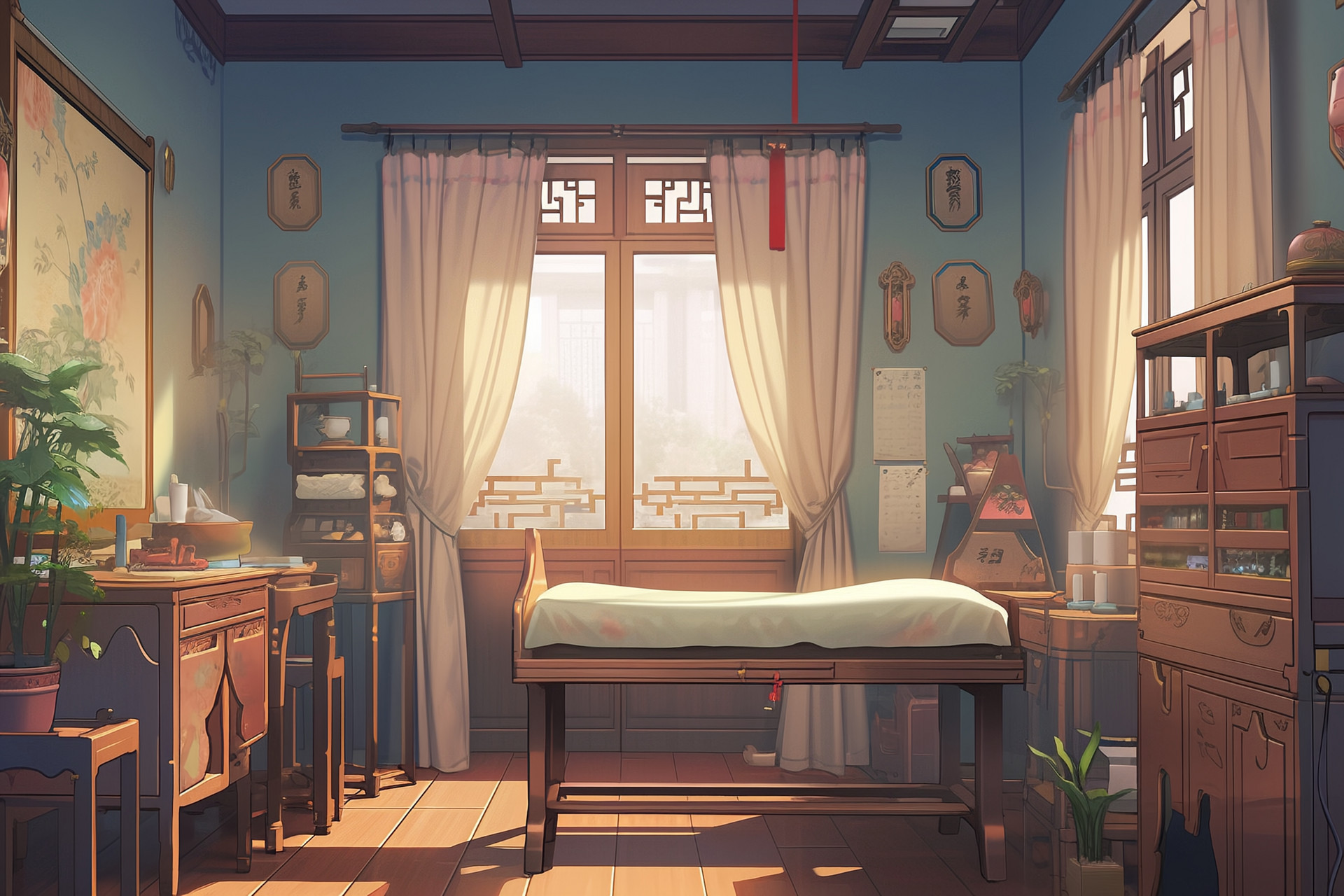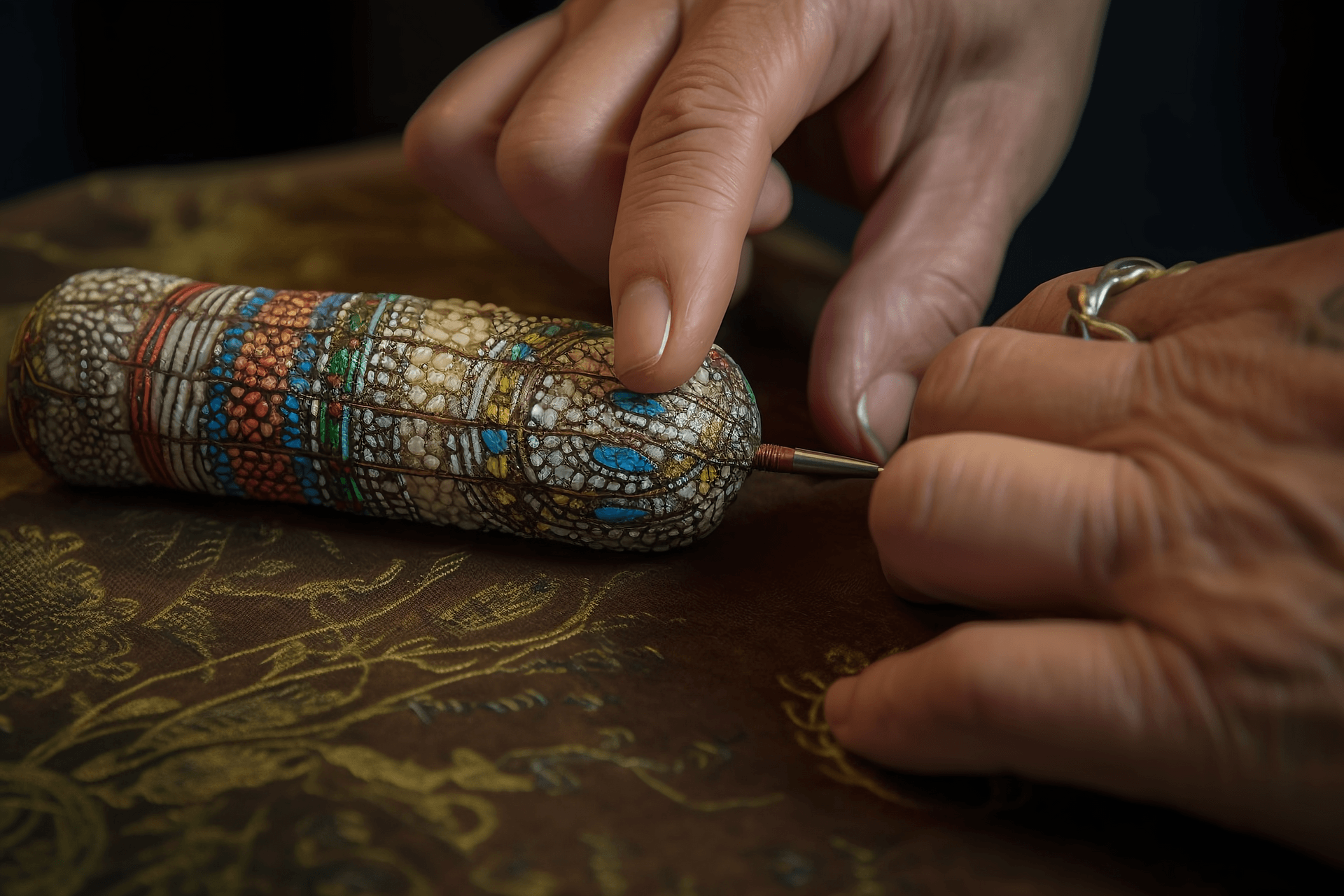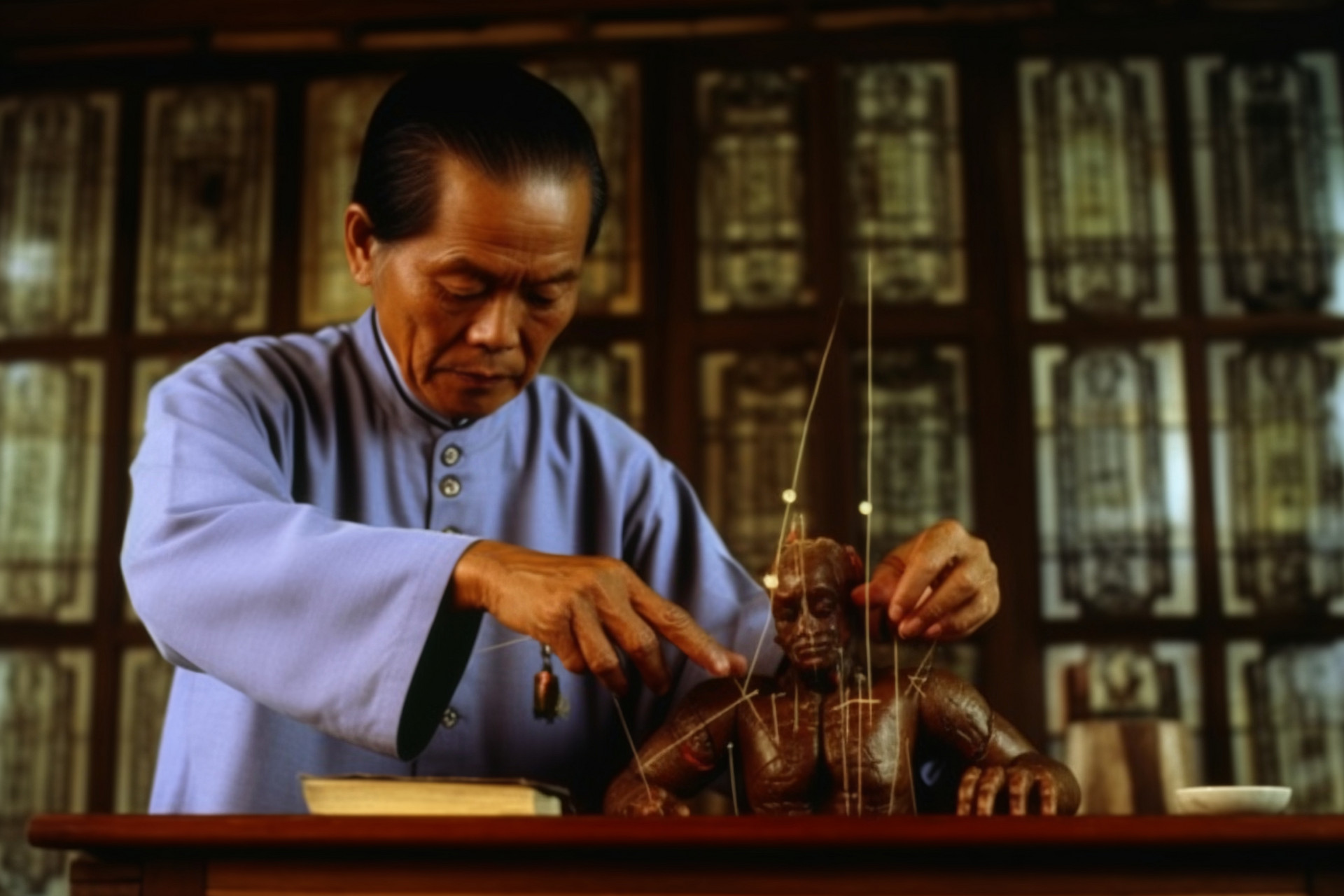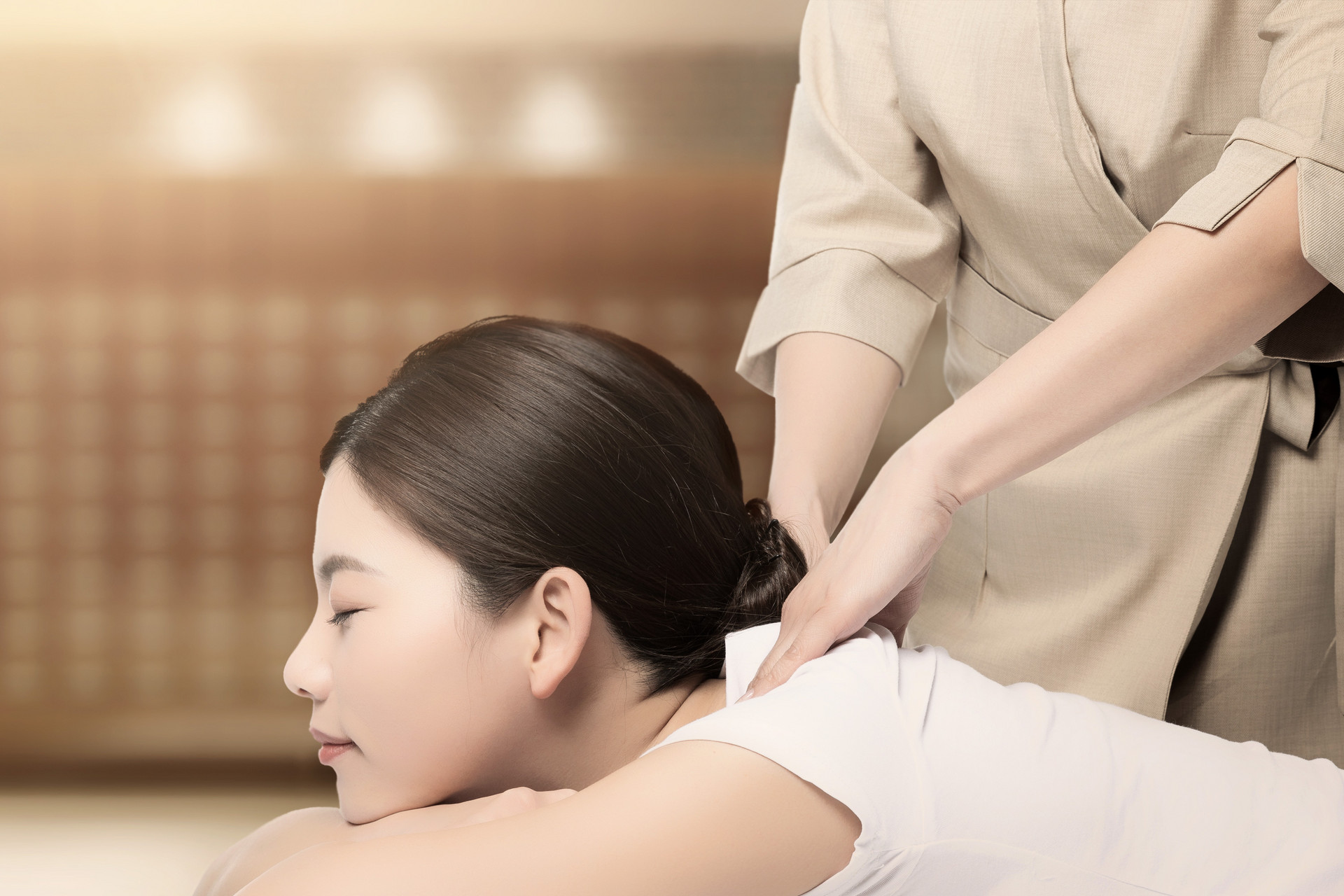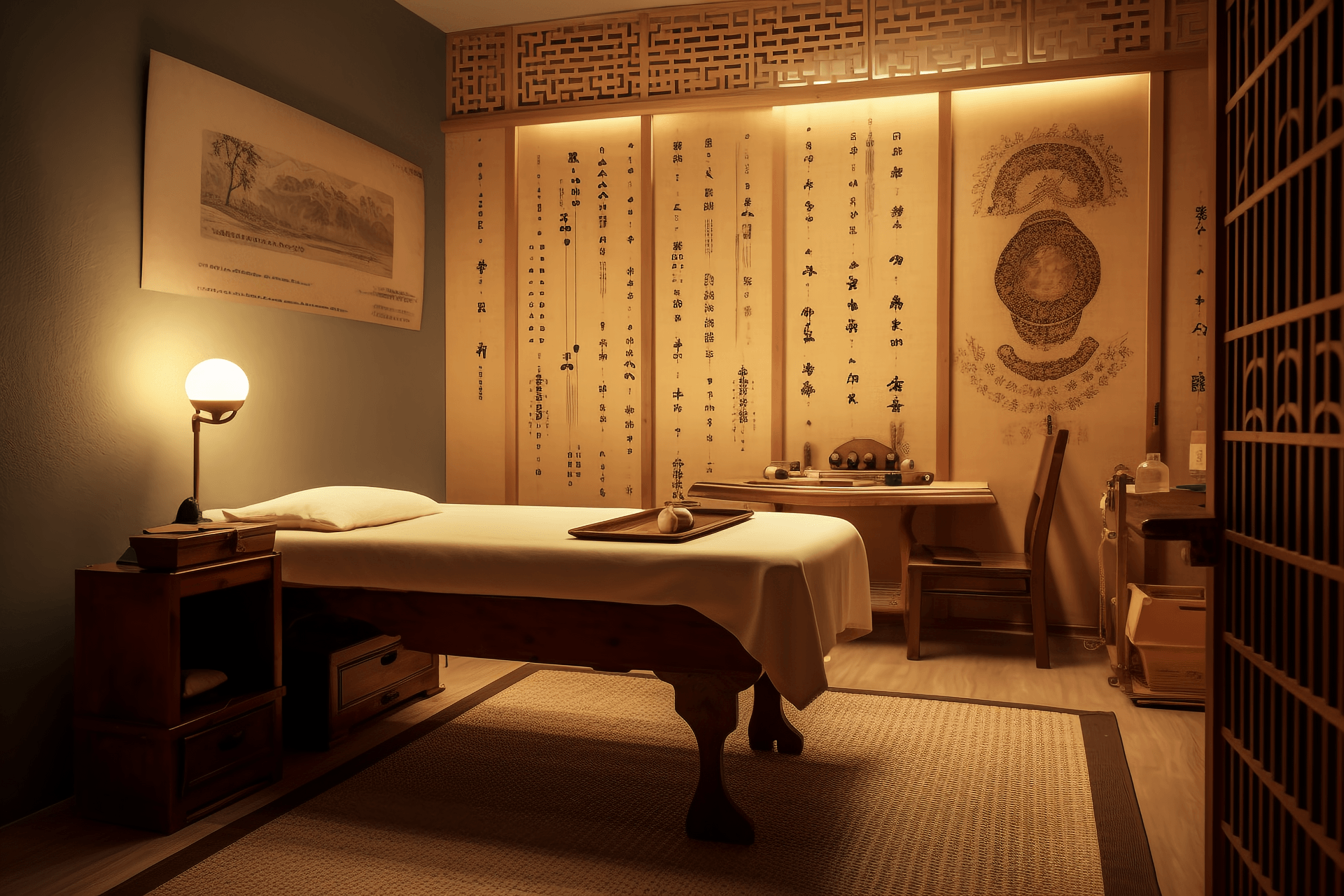Direct moxibustion, also known as Ming moxibustion or skin moxibustion, is a method of applying moxa directly onto the skin for moxibustion. It was called "flesh moxibustion" in ancient times. As mentioned in the "Qian Jin Yao Fang," "the moxa should be placed flat on the flesh, and the fire should reach the affected area." In the case of bamboo back abscess in the "Essential of Surgery," moxibustion with garlic partition was ineffective, so they resorted to flesh moxibustion for a long time. During moxibustion, you can apply some sesame oil or safflower oil on the skin to prevent spillage. Skin moxibustion is divided into two types: suppurative moxibustion (non-scarring moxibustion) and non-suppurative moxibustion (scarring moxibustion) based on the degree of skin irritation and whether there is burn or suppuration after moxibustion.
Suppurative Moxibustion:
Suppurative moxibustion involves directly placing large or small moxa cones onto acupoints for moxibustion, causing blistering on the skin and inducing aseptic suppuration and scab formation. After the scab falls off, it leaves a permanent scar, also known as scarring moxibustion. This method can improve the constitution and enhance the body's resistance, thereby playing a therapeutic and health-promoting role. This method was very popular during the Tang and Song dynasties. As mentioned in the "Zhen Jiu Zi Sheng Jing," "When moxa produces blisters, the illness will be cured. If it does not blister, the illness will not be cured." This indicates that in ancient moxibustion, whether it is for treating diseases or health preservation, the formation of blisters (referred to as moxa sores) was considered the key to achieving therapeutic effects.
Operational Method:
(1) Select the position and acupoint: Ancient people attached great importance to this. As stated in the "Qian Jin Fang," "All moxibustion methods must be performed in a flat and straight position. The limbs should not be tilted. If the acupoint is not properly positioned during moxibustion, it will be of no benefit and will only damage the skin. If sitting, moxibustion should be performed while sitting. If lying down, moxibustion should be performed while lying down."
(2) Placement and ignition of moxa cones: First, apply a small amount of garlic juice, sesame oil, or safflower oil to the acupoint for moxibustion to enhance adhesion and stimulation. After placing the moxa cones, ignite them with an incense stick until all the moxa cones are burned out and the fire extinguishes by itself. Remove the moxa ash and ignite new moxa cones according to the required number of cones. After each moxibustion session, use gauze dipped in cold water to clean the moxibustion acupoints, and then repeat the previous method for moxibustion. Generally, 7 to 9 cones can be used for moxibustion. Since this moxibustion method is more painful, when the moxa cones are burning close to the skin and the patient feels a burning sensation, gently tap the area around the moxibustion acupoint with your fingers to relieve the pain.
(3) Apply medicinal ointment: After moxibustion treatment, wipe the area clean and then apply Yuhong ointment to the moxibustion acupoint. The ointment should be changed every 1 to 2 days. After a few days, aseptic suppuration reactions gradually appear at the moxibustion acupoints. If there is a lot of pus, the ointment should be changed frequently. After about 30 to 40 days, the moxibustion sores scab and heal, leaving scars. During the suppuration of moxibustion sores, it is important to keep the area clean and avoid contamination to prevent the development of other inflammations. At the same time, it is advisable to eat more nutritious foods to promote the normal discharge of moxibustion sores, which is beneficial for improving the therapeutic effect. Since suppurative moxibustion consumes more essence and blood, ancient people paid great attention to post-moxibustion care. The "Zhen Jiu Da Cheng - Post-Moxibustion Care" records, "After moxibustion, do not drink tea immediately to avoid dispersing the fire energy. And avoid eating too soon to prevent stagnation of meridians and energy. Rest for a short period of time, then lie down in a quiet room, away from people and distractions, calm the mind and stabilize the energy. Avoid anger, excessive labor, extreme hunger, overeating, heat exposure, and cold exposure. Also, be cautious with raw and cold fruits as they can obstruct the flow of energy and blood. Only eat light and nourishing food to invigorate the stomach, promote the circulation of qi and blood, and expel pathogenic factors. If there is excessive toxicity, drunkenness, phlegm production, or obstruction of pathogenic factors, it should be treated with surgical methods."
This method should not be used for those who are physically weak, have diabetes, skin diseases, or acupoints on the face.
Non-suppurative Moxibustion:
In clinical practice, non-suppurative moxibustion refers to a degree of mild thermal burn. After moxibustion, the skin does not blister or the blisters do not develop into moxa sores. There is no scarring left after moxibustion, also known as non-scarring moxibustion. Medium to small moxa cones are commonly used in clinical practice.
Specific Procedure: First, apply a small amount of sesame oil or safflower oil to the moxibustion site. Then, place small moxa cones onto the acupoint and ignite them. Before the moxa cones burn onto the skin, when the patient feels a burning sensation, use tweezers to remove or extinguish the moxa cones. Alternatively, you can continue moxibustion for 3 to 5 seconds after the patient feels a heating sensation, then replace the moxa cones and continue moxibustion. Moxibustion is usually performed for 3 to 7 cones continuously until there is a slight redness on the local skin. Because it does not leave scars, it is easily accepted by patients.




